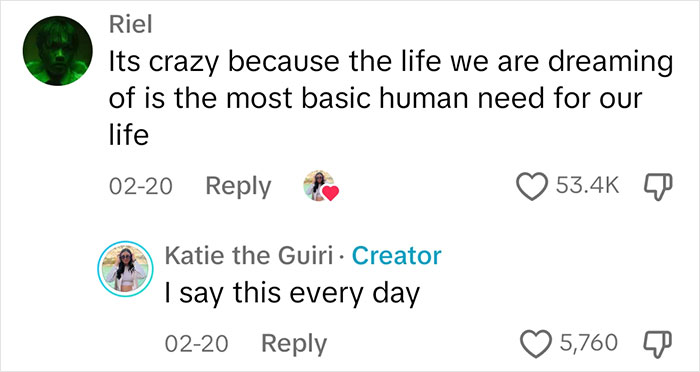Spain sounds like paradise on Earth, but it can still be jarring to move there from a different country. Suddenly, you look at life through a completely different lens. What was once familiar is now very different, whether you’re going to the grocery shop, eating dinner, interacting with strangers, or simply walking down the street.
Travel and culture content creator Katie Boggs, recently moved to Spain from the United States. In a series of popular videos on TikTok and Instagram, she shared her biggest culture shock moments, and we wanted to share her best insights about Spanish life with you.
Bored Panda reached out to Katie, and she was kind enough to tell us all about what inspired her to move to Spain, what she loves the most about life there, and what can motivate everyone to start traveling themselves. You’ll find our full exclusive interview with her below!
More info: Instagram | Linktree | TikTok
Many people fall in love with Spain and wonder what it would be like to live there
Image credits: Susanna Cama / pexels (not the actual photo)
Katie Boggs recently moved to Spain from the United States. She created a series of videos where she shared her top culture shock moments
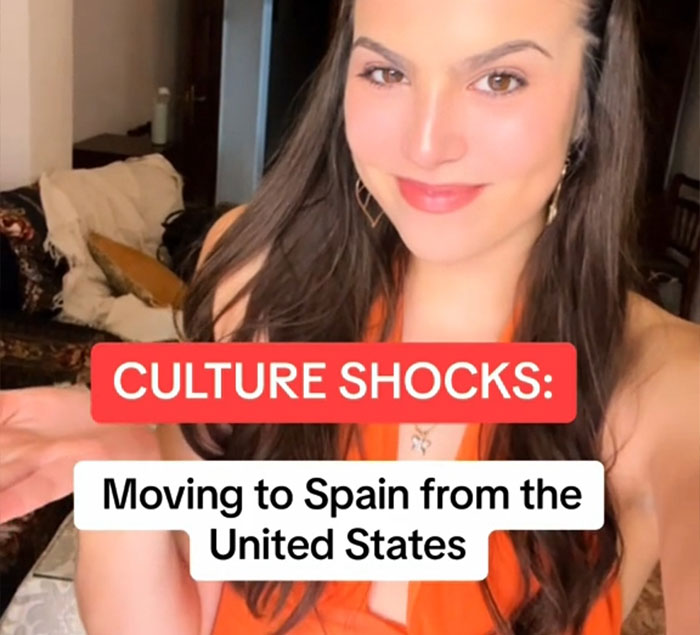
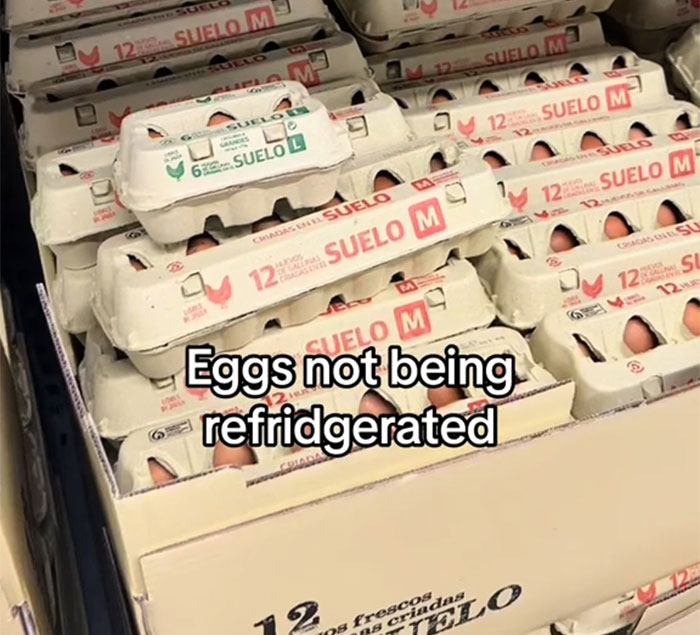
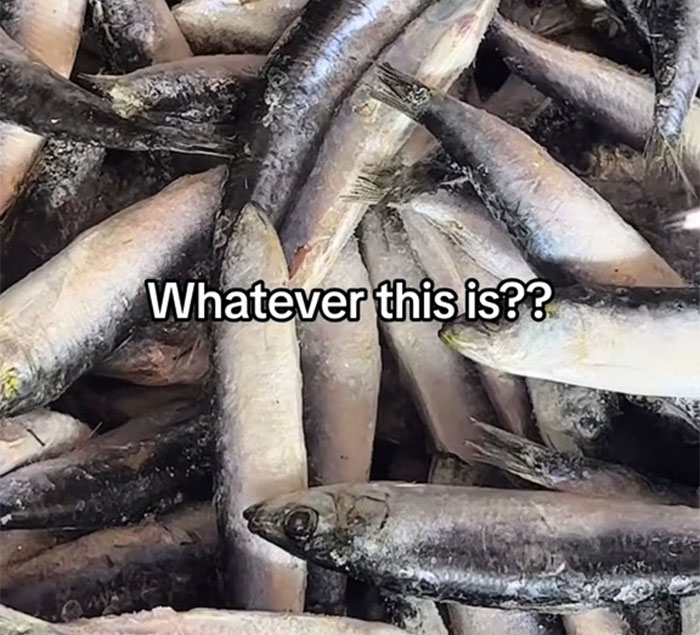
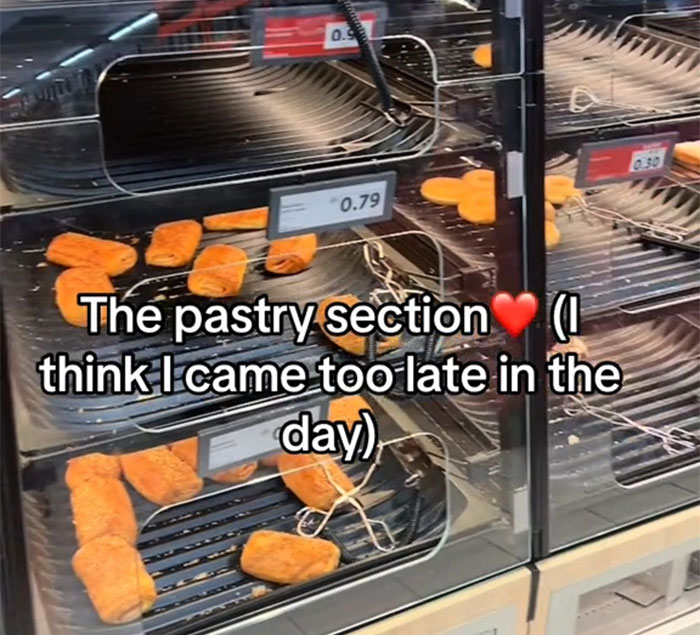
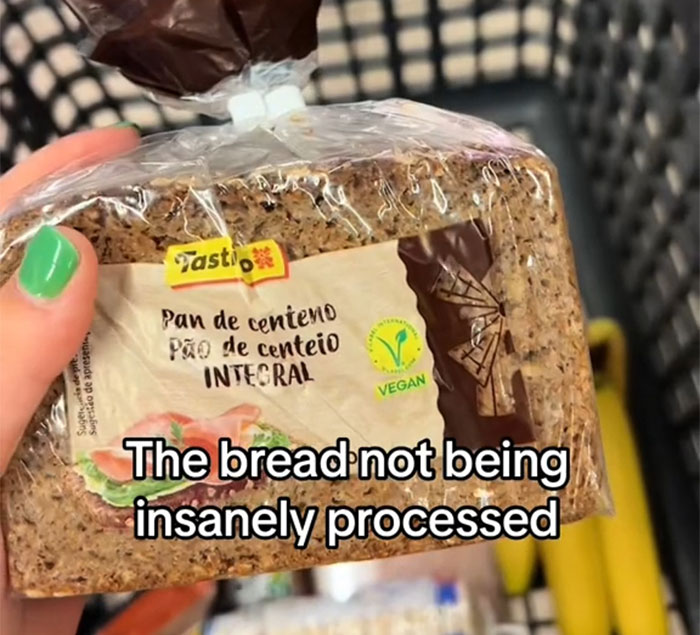
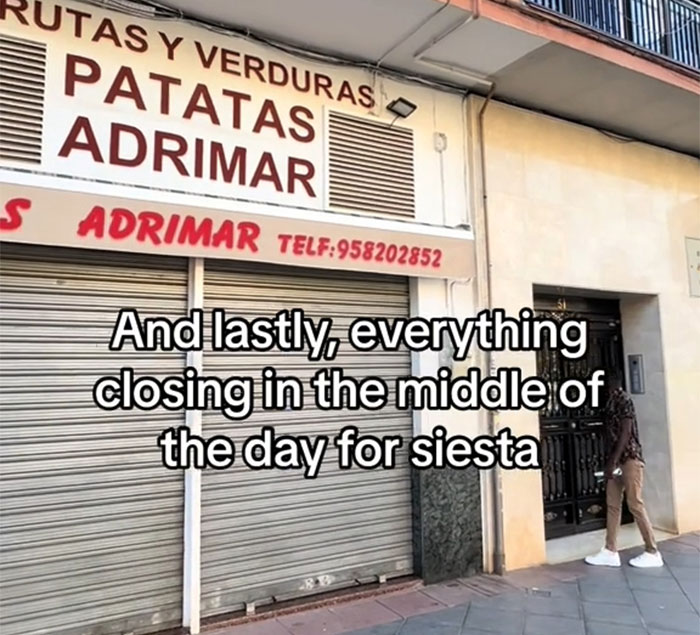
Image credits: katieboggs_
She opened up about some more cultural differences in a follow-up video
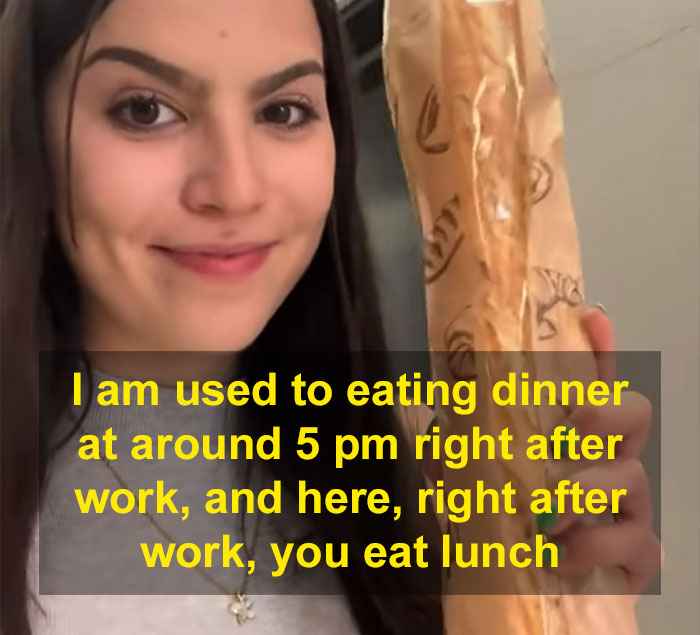
Image credits: katietheguiri
“My name is Katie, I just moved to Spain from the United States two weeks ago, and I’m coming at you with culture shocks. The biggest culture shock for me has definitely been adjusting to the eating schedule here. In the United States, I am used to eating dinner at around 5 or 5:30 right after work, and here, right after work, you eat lunch, and then you don’t eat dinner until 9 or 10 pm, which is crazy to me.”
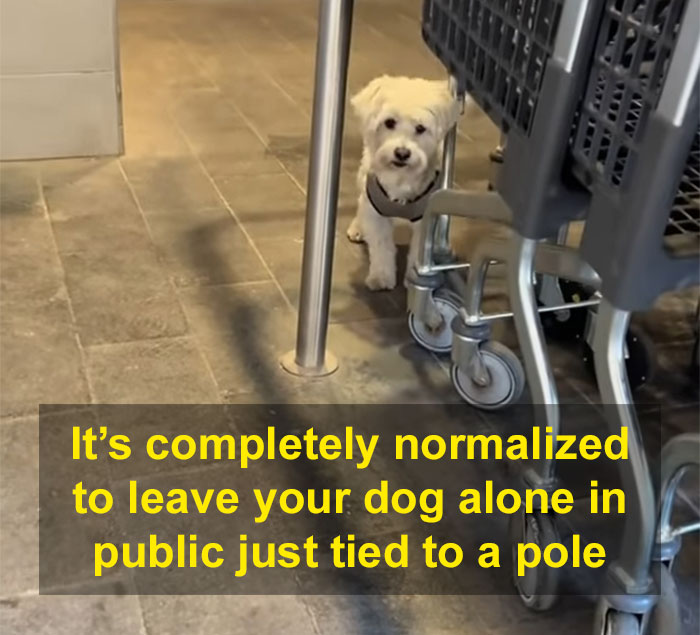
Image credits: katietheguiri
“The next thing I noticed is that it’s completely normalized to leave your dog alone in public just tied to a pole or something while you’re shopping, and no one will bother it. That’s really crazy to me. And last but not least, the emphasis on social interaction here is incredible. You go to a coffee shop here or a cafeteria, and people are actually sitting there and talking to each other, and they’re not on their laptops, and they’re enjoying their meal. That would never happen in the United States. You go to Starbucks and everyone’s on their phones and laptops. It’s crazy.”
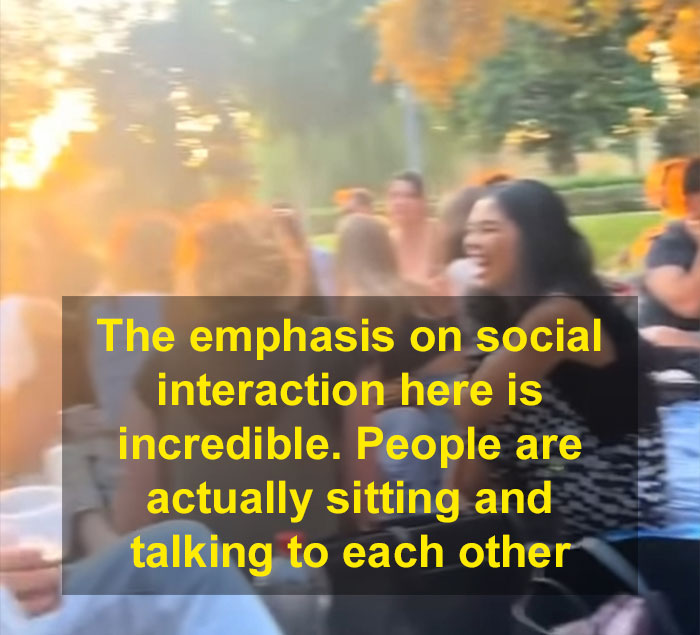
Image credits: katietheguiri
In another clip, Katie broke down just how affordable life in Spain can be
“I’m going to break down all of my costs a month to show you how absolutely ridiculously livable it is. Rent: 325€, utilities: 30€, food for one month: 150€ (and I kind of spent a lot on food compared to my friends, so that’s saying something), phone bill + Wi-Fi: 27€, gym: 30€ a month, one singular bus ride is 40 cents. I also get breakfast out every single day and it’s literally affordable to do that. I get a sandwich with tomato and tuna (don’t knock it until you try it, it’s really good). And then I get a café con leche, which is practically like a latte. Every morning, the total is 3.30€. 3.30€! You can’t even get a coffee, you can’t even get half of coffee for that in the United States.”
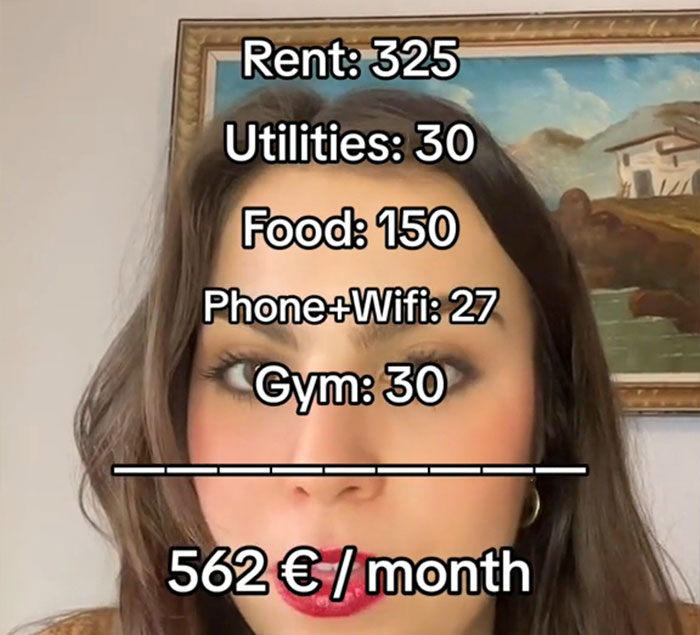
Image credits: katietheguiri
“I’m in Granada and a glass of wine is costing me 3€. And the thing about Granada is you get a tapa with it for free. So what my friends and I will do whatever we want to go out is we’ll get three glasses of wine and that comes with three tapas, which pretty much is dinner. You’re literally spending 9€ on three drinks and dinner. And the wine doesn’t make you hungover because it doesn’t have all these additives that the United States has. I also only work 14 hours a week, yeah. Now that’s not normal to Spain, it’s just with the program I’m with. I’m walking everywhere, it’s always sunny outside. Not to mention that everyone’s literally so friendly. The party life is so much better. Not to mention, they got siestas, come on.”
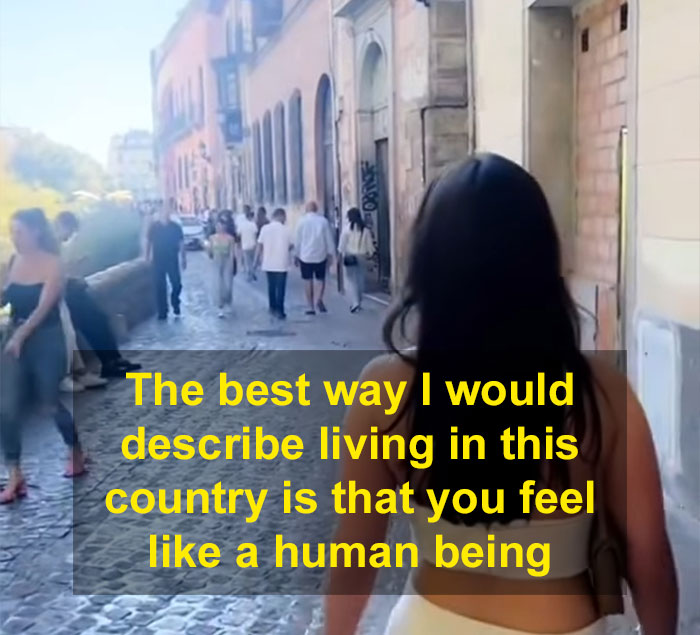
Image credits: katietheguiri
“The best way I would describe living in this country is that you feel like a human being. Everything shuts from 2 pm to 5 pm every single day so everyone can go home and relax, eat a meal, take a nap. Most things are shut on Sundays. So you always have that day off to just rest. There are fruterías on every single corner where I literally get all my fruits and vegetables for the whole week for like 6€, and they’re amazing quality. I cannot stress enough if you have the opportunity to come to Spain and just experience life here. Whether it’s just short-term or long-term, do it because it will change your life and your perspective.”
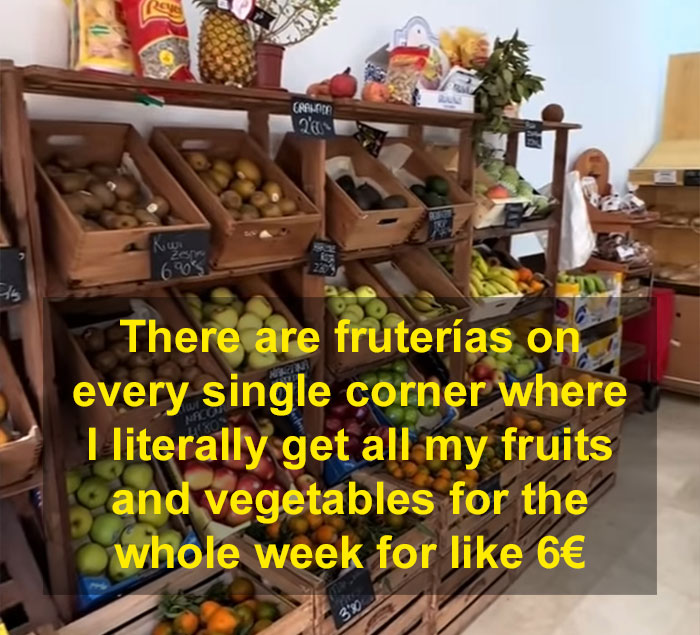
Image credits: katietheguiri
You can watch Katie’s full viral video about culture shocks right over here
@katieboggs_ Siesta= Key to happiness #fyp #foryou #spain #cultureshocks #usa #unitedstates #eeuu #espana ♬ original sound – Kacie Rose
Meanwhile, here’s her full video about the cost of living
@katieboggs_ #stitch with @lanna 🌻 loved this video and wanted to add my experience! #spain #anticapitalism #costoflivingcrisis #america #costofliving #americanineurope ♬ original sound – Katie the Guiri
Katie opened up to us about what inspired her to make the move to Spain
We were very curious to find out what inspired Katie to travel to Spain in the first place. She was happy to share her story with us. “I actually took a trip here on my spring break last year. I was visiting my best friend who was doing her masters in London and we decided to do a random weekend trip to Malaga. She picked it because she had seen an Instagram video about it, I didn’t know ANYTHING about Spain. We were there for 3 days and by the second day, I was in love. With everything. The culture, the sun, the food, the friendliness, the language, the fashion,” she told Bored Panda via email.
“I had a friend who was teaching English up north in Zaragoza and I messaged her asking how she did it and she sent over the program (NALCAP). I applied 2 days later, downloaded Duolingo, and moved home for the summer to save money. I practiced Spanish every day on Duolingo and watched movies and TV in Spanish even though I barely understood a thing. Now, almost exactly a year later, I speak Spanish and live here and I love every minute of it!”
According to Katie, it took her a few months to get used to life there because it was so different. She pointed out that, for one, the pace of things in restaurants and elsewhere is much slower. Meanwhile, places close a lot. “On Sundays, most everything is closed, as well as every day from 2-5 pm for siesta. There also is a language barrier and it took a while to get accustomed to the Spanish way of saying things as I learned textbook Mexican Spanish which is a tad different. I also had to adapt to the crazy eating schedule here. They eat lunch late at like 2-3 pm and dinner is 8-10pm!” she shared with us.
For Katie, the biggest upsides of moving to Spain were the awesome weather (“it’s sunny almost all year and it rarely rains”) and the slower pace (“things are so chill”). She lives in the south of Spain and found that the people are incredibly friendly. But there are even more pros compared to the US!
“The architecture is BEAUTIFUL here and I love the Spanish Andalusian-style buildings. I love love love that I can walk everywhere and the food quality is INSANELY better here. Also, a glass of wine here is like 3 euros, so I see my friends way more because it’s so affordable to go get drinks on a random weeknight and catch up. People here are also more chill. They don’t overschedule themselves like Americans, so when you want to plan something with someone, it’s more of ‘Hey, wanna grab tapas tonight?’ ‘Sure!’, instead of ‘Hey, wanna grab dinner sometime this week?’ ‘Sorry I’m SUPER busy but I can do 3 weeks out at 5 pm on Thursday.'”
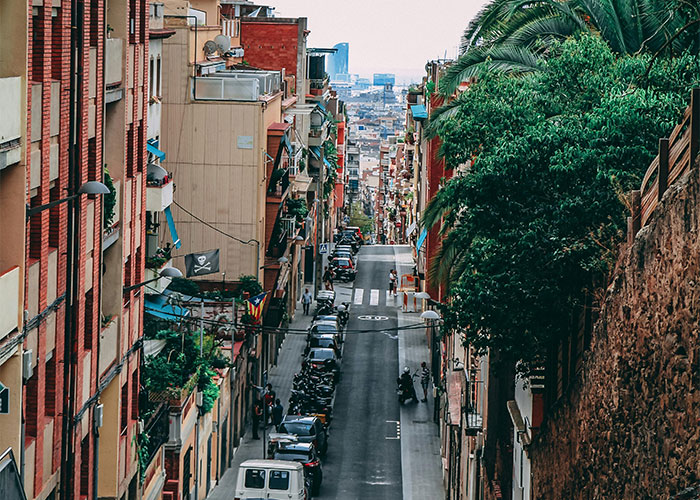
Image credits: Enrico Perini / pexels (not the actual photo)
“The best travelers go with the flow and experience everything with open arms”
However, we were also interested to hear what Katie misses about life in the US as well. She said that it’s mostly the food. “I miss the surplus of options of food choices from all different cultures,” she said. “We do Japanese, Chinese, Mexican, Thai food all SO MUCH BETTER [in the US] than here [in Spain]. I also miss certain things like the air conditioning and heating (sometimes it gets really hot or cold inside the buildings here). I also really miss iced coffee. And American pancake breakfast. I mostly miss the food.”
Bored Panda also wanted to get Katie’s thoughts on how someone who’s never traveled before might get used to going on more trips. “I was also scared to start traveling because of money and safety. However, I can tell you I barely have money now and I travel ALL the time. European travel is pretty cheap because transportation here is so cheap (Ryanair flights for 30 euros) and the buses and trains here rock. The most expensive part is the plane ticket overseas,” she shared some tips.
“My advice is to research and plan stuff before because then you can skip lines for big attractions and also you will have heard things to avoid before you come. Come prepared with a portable charger, medicine, hand sanitizer, and everything that you can possibly think of ‘just in case.’ Research the city you’re going to and the possible tourist traps and how to avoid them and honestly, don’t just stick to the big obvious cities like Paris or Madrid because those are ALWAYS the most expensive and usually my least favorite.”
Katie urged everyone to keep an open mind about different cultures and not to expect everything to be like in the United States. “Oftentimes, my friends will visit me and be upset when certain foods won’t be available or the air conditioning isn’t on or people don’t act as friendly and my response is, ‘What do u expect? This is a whole different country!’ The best travelers go with the flow and experience everything with open arms!” Be sure to follow Katie’s Instagram and TikTok for her freshest videos.
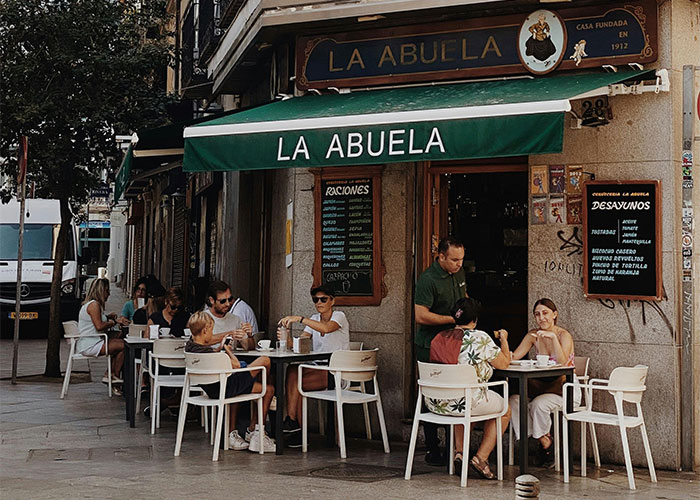
Image credits: Anastasia / pexels (not the actual photo)
Spanish is one of the most popular languages in the world, so you’ll be at an advantage if you learn it
For us, Spain is the embodiment of stunning nature, great weather, fresh food, and friendly locals. Spain has 47.8 million people living there, compared to the 333.3 million in the US. According to ‘Best Diplomats,’ around 53 million Americans speak Spanish, of which 41 million are native Spanish speakers and 12 million are bilingual.
However, Rosetta Stone puts the number of US Spanish speakers at 57 million people. Spanish has 496 million native speakers around the world, making up 6.3% of the global population. This number is even bigger when we consider the number of total speakers, standing at a stunningly impressive 595 million.
It is the second most spoken native language after Mandarin Chinese and the fourth most spoken language overall, after English, Mandarin, and Hindi. Most Spanish speakers can be found in Mexico, the US, Colombia, Spain (naturally!), followed by Argentina, Peru, Venezuela, Chile, Guatemala, and Ecuador.
The EF English Proficiency Index states that the Spanish have ‘moderate proficiency’ in English skills. El Pais reports that 27.7% of all Spaniards say they can speak the language.
So, if you plan on traveling or moving to the country, it would make sense to learn at least some basic phrases in Spanish. You can’t rely on luck that someone you talk to is going to know English.
If you do your best to learn the language, not only are the locals likely going to be friendlier with you, but you’ll also have a far richer experience when you can understand what everyone’s saying. A core part of travel and adventure means opening yourself up to new experiences. And that means embracing the culture, language, food, and lifestyle.
In our experience, the best way to learn any language is to practice it in real-life situations. Apps like Duolingo and programs like Rosetta Stone are wonderful, to be sure. However, we personally see the biggest progress when we have some native speakers to guide our way.
In short, when you’re learning any new language, it really helps to have a growth-oriented mindset. Make mistakes—and lots of them! That’s how we learn.
And don’t be scared of talking to the native speakers and locals even if you only know a few shaky basic phrases. It’s the willingness to try that really counts! Besides, it’s a great feeling when you apply something you’ve learned in real life.
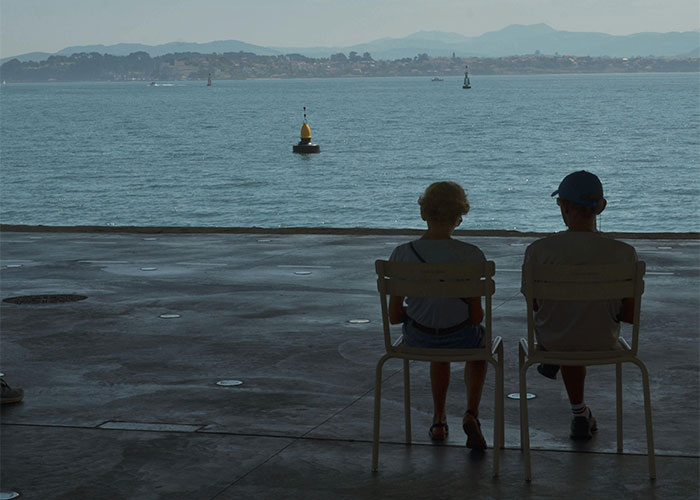
Image credits: Carlos Mazorra / pexels (not the actual photo)
If you’re completely new to travel, start off by taking very small trips and then building up to bigger adventures
At the time of writing, travel-grammer Katie has 17.3k loyal Instagram followers who enjoy her videos about life in Spain. She also has 49.2k fans on TikTok. Katie gives everyone a fresh perspective of what life in the country is really like. And it’s all very relatable for anyone who has traveled to the European country, whether they were a tourist, an exchange student, or a working professional.
However, far from everybody has the courage to travel abroad. While we find travel wonderful, some folks daydream about adventuring near and far but get overwhelmed with stress when they think about all the possible things that could go wrong.
Previously, Bored Panda spoke about stepping outside our comfort zone with Keith O’Hara, the founder of The Irish Road Trip. “Being ‘too busy’ is never an excuse to put off enjoying life, yet it’s a trap many of us plummet head-first into, whether it be due to financial or work commitments. Often, you just need to start small,” he told us during an earlier interview.
He suggested creating a list of travel goals that you’d ideally love to fulfill in the future. In the meantime, you can work up to them by setting yourself more realistic travel destinations, in terms of time and money. “ You’ll (hopefully) start to see the benefits of these ‘baby-step’ trips. Then, when the time is right, make that ‘main’ trip,” he said.
Solo travel is also an option. Even though it might sound intimidating, you can still do it. Consider what the worst-case scenario might be: it’ll probably never happen.
“Be enthusiastic, but be educated about your destination. Understand, at least at a very high level, the ins and outs of where you’re traveling to and take time to understand any dos and don’ts,” O’Hara shared some spot-on advice for all travelers. “For the most part, just embrace it all—one of the joys of travel is experiencing people, places, food, language, and culture. Soak it all up.”
Here’s what some internet users had to say after watching Katie’s clips






